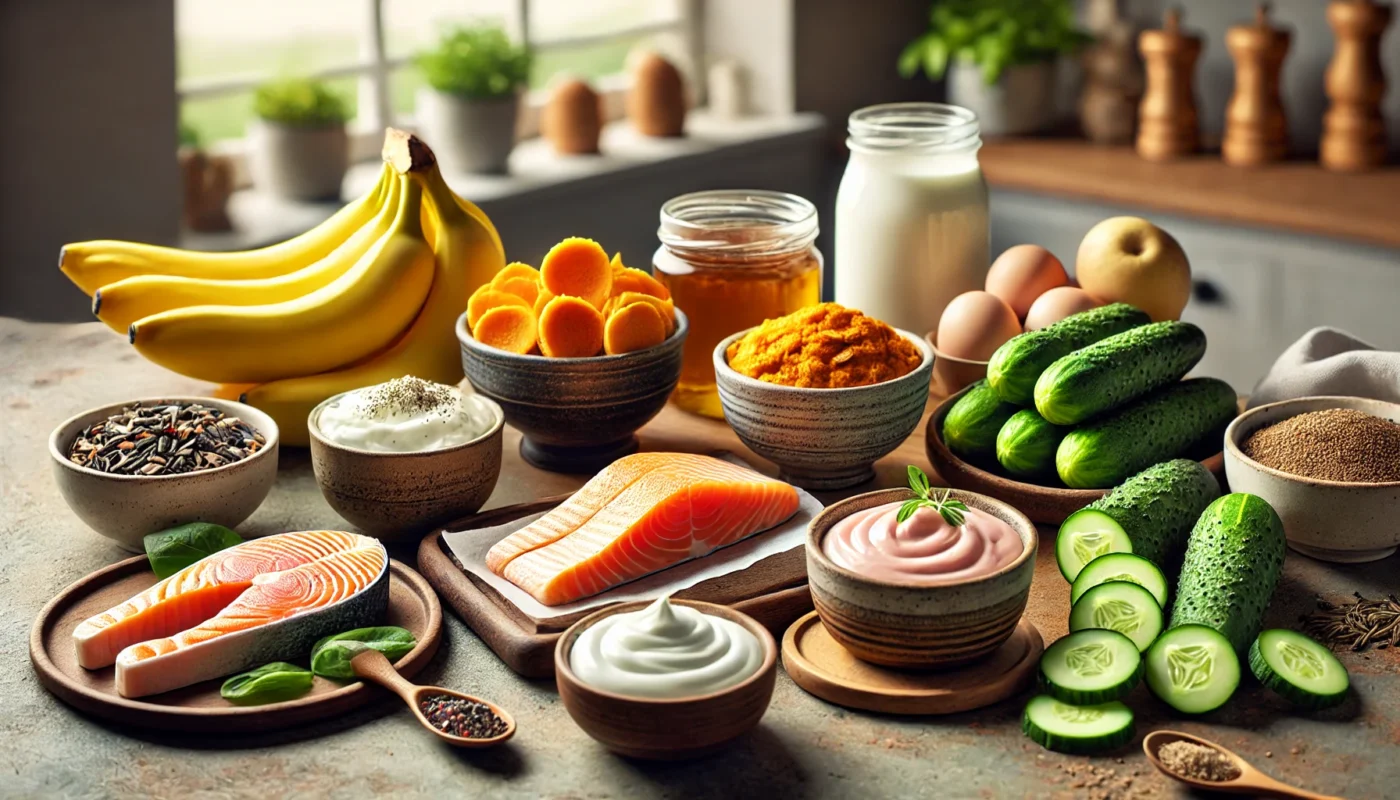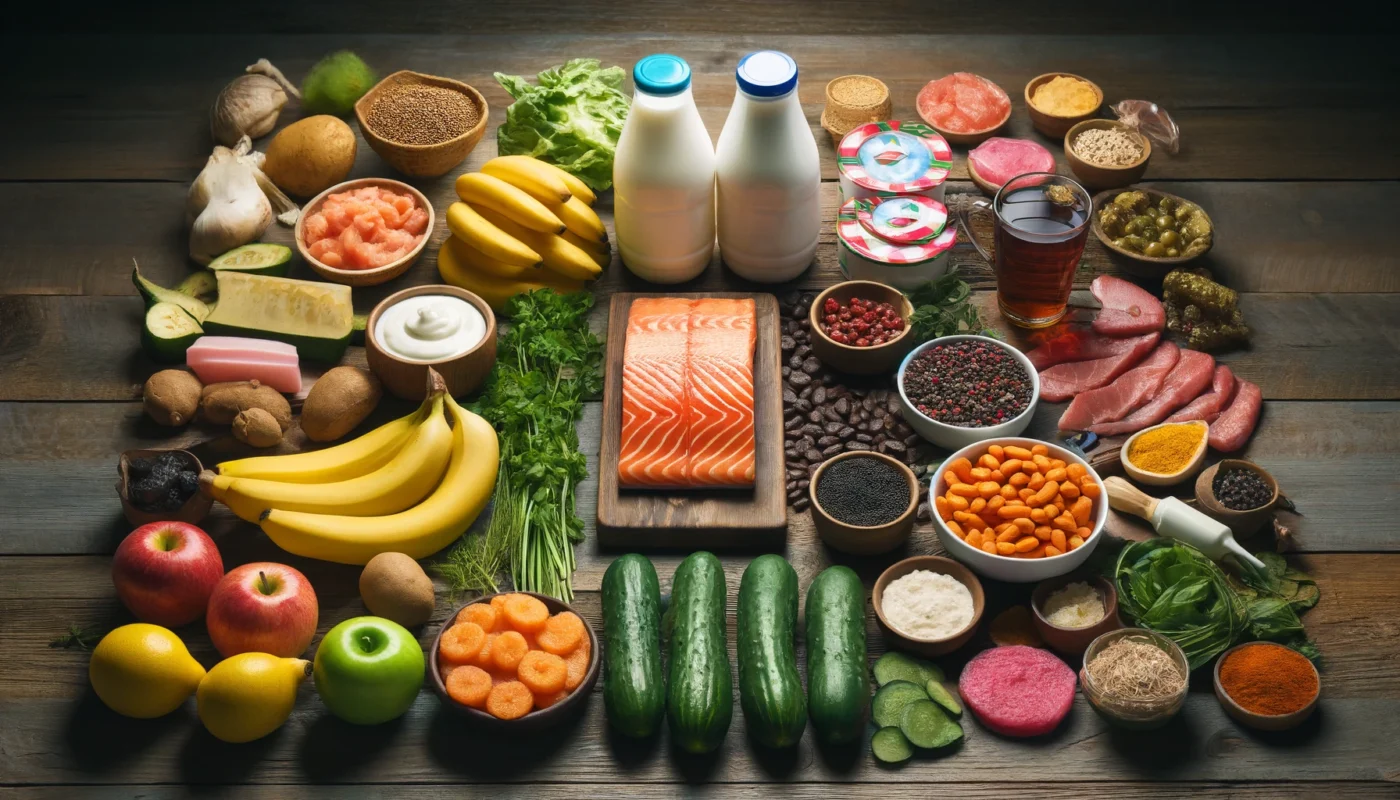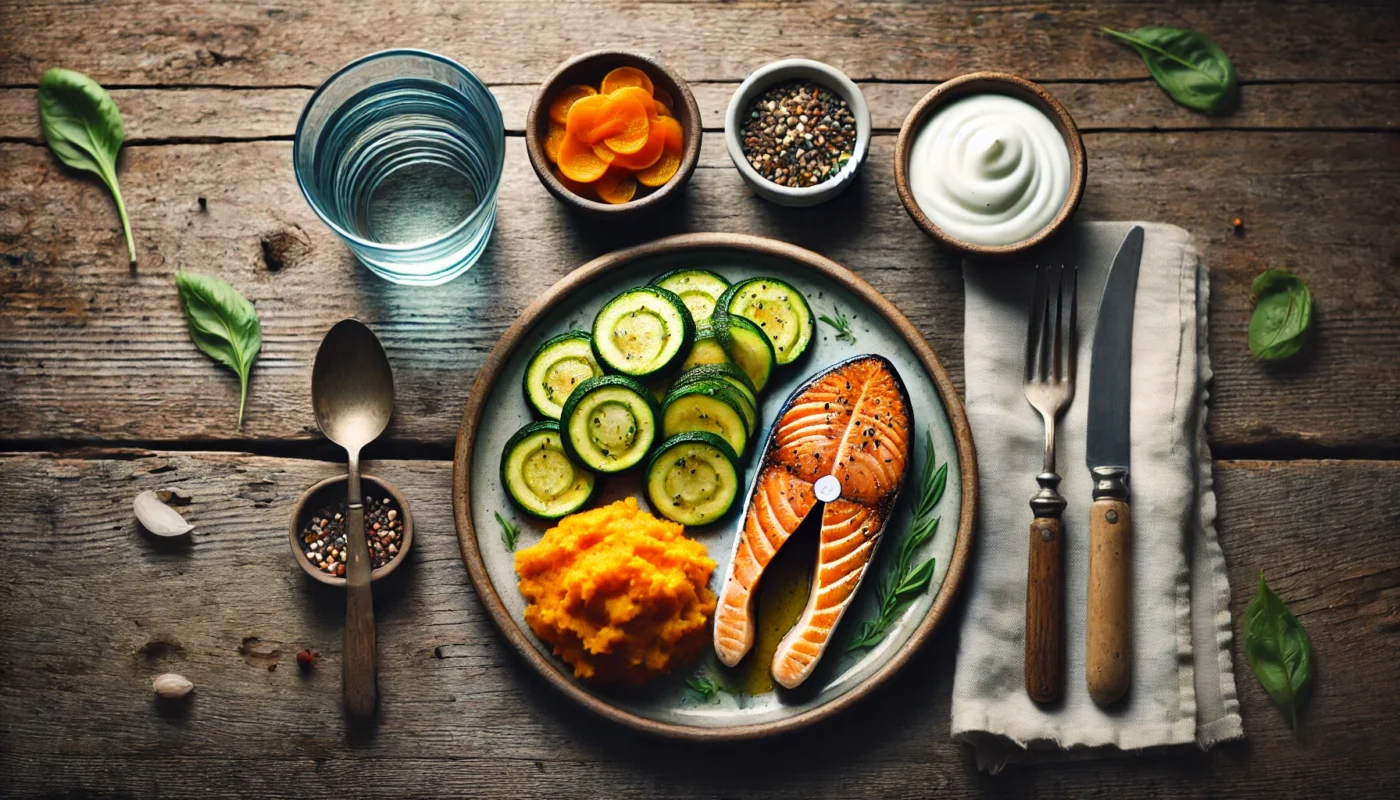Inflammatory Bowel Disease is a chronic condition characterized by inflammation of the gastrointestinal tract. This inflammation can lead to symptoms such as abdominal pain, diarrhea, fatigue, and weight loss. While there is no one-size-fits-all diet for IBD, certain dietary modifications can alleviate symptoms and improve quality of life.
The Nature of Inflammation in IBD
Understanding the type of inflammation present in IBD is crucial. The inflammation can be persistent or occur in episodes, known as flare-ups. These episodes can cause significant discomfort and may require changes in diet to manage symptoms effectively.
How Diet Impacts IBD
Diet plays a pivotal role in managing IBD. The foods we consume can influence the degree of inflammation and the frequency of flare-ups. For many, modifying their diet can lead to a noticeable improvement in symptoms and overall wellbeing.
The Importance of an IBD-Specific Diet
An IBD-specific diet aims to minimize inflammation, manage symptoms, and support nutrient absorption. By selecting anti-inflammatory foods and avoiding triggers, individuals with IBD can experience fewer flare-ups and maintain better overall health.
Nutrient Absorption Challenges
IBD can interfere with the body’s ability to absorb essential nutrients. This can lead to deficiencies, which may worsen symptoms or contribute to other health issues. A well-planned diet can help address these challenges by ensuring adequate intake of vital nutrients.
The Role of Personalized Nutrition
Since IBD symptoms and triggers vary greatly among individuals, personalized nutrition plans are essential. Tailoring dietary choices to individual needs can significantly enhance the effectiveness of dietary interventions and improve quality of life.
You May Also Like: Exploring the Irish Autoimmune Diet Benefits
Foods to Include in an IBD-Friendly Diet
Selecting the right foods is crucial for managing IBD. Here are some nutrient-rich options that can help soothe the digestive tract and reduce inflammation:
Omega-3 Fatty Acids
Found in fatty fish such as salmon, mackerel, and sardines, omega-3 fatty acids possess potent anti-inflammatory properties. These healthy fats can help reduce the severity of inflammation in the gut, making them a valuable addition to an IBD diet.
Sources and Benefits of Omega-3s
Besides fatty fish, omega-3s can be found in walnuts, flaxseeds, and chia seeds. These sources provide essential fatty acids that contribute to heart health and may reduce inflammation throughout the body, including the gut.
Incorporating Omega-3s into Your Diet
Incorporate omega-3-rich foods by preparing fish-based dishes a few times a week. For plant-based sources, add flaxseeds to smoothies or sprinkle them over salads for a nutritious boost.
Omega-3 Supplements
For those who find it challenging to get enough omega-3s from food, supplements can be a convenient alternative. Always consult with a healthcare professional before starting any supplement to ensure it’s appropriate for your needs.
Low-Fiber Fruits and Vegetables
During flare-ups, high-fiber foods can exacerbate symptoms. Instead, opt for low-fiber fruits and vegetables such as bananas, melons, and peeled cucumbers. These foods are gentler on the digestive system while still providing essential vitamins and minerals.
Benefits of Low-Fiber Options
Low-fiber fruits and vegetables are easier to digest and less likely to irritate the intestines. They offer a gentler alternative during flare-ups, reducing discomfort and promoting nutrient absorption.
Creative Low-Fiber Meal Ideas
Create delicious meals using low-fiber options. Smoothies made with bananas and melons, cucumber salads, and steamed vegetables can provide variety and nutrition without triggering symptoms.
Transitioning Back to Fiber
Once symptoms improve, gradually reintroduce higher fiber foods. Monitor your body’s response and adjust your diet accordingly, ensuring a balanced intake of fiber over time.
Fermented Foods
Fermented foods like yogurt, kefir, and sauerkraut are rich in probiotics, beneficial bacteria that support gut health. Including these foods in your diet can help maintain a balanced gut microbiome, which is crucial for individuals with IBD.
Understanding Probiotics and Gut Health
Probiotics are live bacteria and yeasts that are good for your digestive system. They help balance the good and bad bacteria in your gut, which can be particularly beneficial for those with IBD.
Fermented Food Varieties
Explore a variety of fermented foods such as kimchi, miso, and kombucha. Each offers unique flavors and probiotic benefits, making them versatile additions to an IBD-friendly diet.
Preparing Fermented Foods at Home
For those interested in DIY, making fermented foods at home can be rewarding. With proper techniques, you can create homemade yogurt or sauerkraut, ensuring freshness and quality.
Lean Proteins
Protein is essential for tissue repair and immune function, especially during periods of inflammation. Choose lean sources of protein such as chicken, turkey, and tofu to support your body’s needs without overloading the digestive system.
Importance of Protein in IBD
Protein supports the body’s repair processes and immune response. For individuals with IBD, adequate protein intake is vital for healing and maintaining muscle mass, particularly during flare-ups.
Selecting Lean Protein Sources
Lean proteins such as fish, eggs, and legumes offer essential amino acids without excessive fat. These options provide the necessary building blocks for recovery and overall health maintenance.
Cooking Techniques for Lean Proteins
Opt for gentle cooking methods such as poaching, steaming, or baking. These techniques help preserve the nutritional value of proteins while making them easier to digest.
Hydration
Proper hydration is essential for individuals with IBD, as diarrhea can lead to dehydration. Aim to drink plenty of water throughout the day and consider electrolyte-rich beverages if you’re experiencing significant fluid loss.
Recognizing Signs of Dehydration
Common signs of dehydration include dry mouth, fatigue, and dark urine. For those with IBD, monitoring hydration levels is crucial, especially during bouts of diarrhea.
Choosing the Right Beverages
In addition to water, consider drinks like coconut water or oral rehydration solutions to replenish lost electrolytes. Herbal teas can also provide hydration while offering soothing properties.
Strategies for Staying Hydrated
Set regular reminders to drink fluids throughout the day. Carry a water bottle and sip frequently, especially during hot weather or when experiencing increased symptoms.

Foods to Avoid with Ulcerative Colitis and Crohn’s Disease
Certain foods can trigger symptoms and should be avoided to maintain digestive comfort and reduce inflammation:
High-Fiber Foods
While fiber is beneficial for many individuals, those with IBD may need to limit high-fiber foods during flare-ups. Avoid whole grains, nuts, seeds, and raw vegetables, as these can irritate the digestive tract.
Why High-Fiber Foods Can Be Problematic
High-fiber foods can be difficult to digest and may aggravate the intestines during flare-ups. They can increase bowel movements and cause discomfort, prompting the need for moderation.
Identifying High-Fiber Foods
Recognizing high-fiber foods is key to managing intake. Foods like bran, lentils, and certain fruits with skins are common sources of fiber that may need to be limited during flare-ups.
Balancing Fiber Intake
When symptoms subside, gradually reintroduce fiber to your diet. Balance is essential, as fiber plays a crucial role in overall health and digestion when tolerated.
Dairy Products
Lactose intolerance is common among individuals with IBD. If you experience symptoms after consuming dairy, consider lactose-free alternatives or plant-based options such as almond milk or coconut yogurt.
Understanding Lactose Intolerance
Lactose intolerance results from a deficiency in lactase, the enzyme needed to digest lactose. Symptoms include bloating, gas, and diarrhea, which can exacerbate IBD discomfort.
Exploring Dairy Alternatives
Explore a variety of plant-based milks and yogurts, such as soy, oat, or cashew. These alternatives can provide essential nutrients without triggering symptoms associated with lactose.
Incorporating Calcium Without Dairy
Ensure adequate calcium intake through other sources like fortified plant milks, leafy greens, and fish with bones. This helps maintain bone health while avoiding dairy-related symptoms.
Spicy Foods
Spicy foods can irritate the digestive tract and exacerbate symptoms. It’s best to avoid hot peppers, spicy sauces, and heavily spiced dishes to prevent discomfort.
Impact of Spicy Foods on Digestion
Spicy foods can stimulate the digestive tract, leading to increased bowel movements and discomfort. For those with IBD, avoiding these foods can help manage symptoms more effectively.
Alternatives to Spice
Use herbs and mild spices to add flavor without the heat. Basil, oregano, and thyme offer aromatic alternatives, allowing you to enjoy flavorful dishes without irritation.
Flavorful Recipes Without Spice
Experiment with recipes that focus on flavors rather than heat. Consider dishes with lemon, garlic, or rosemary to create satisfying meals that are gentle on the stomach.
Caffeinated and Carbonated Beverages
Caffeine and carbonation can increase bowel movements and gas production, leading to discomfort. Opt for herbal teas or water instead of coffee, soda, and energy drinks.
Effects of Caffeine and Carbonation
Caffeine can stimulate the gut, while carbonation may cause bloating and gas. Both can exacerbate symptoms in individuals with IBD, making moderation or avoidance beneficial.
Choosing IBD-Friendly Beverages
Select beverages that are soothing and hydrating. Herbal teas, such as chamomile or peppermint, offer calming effects and can be a comforting choice for those with IBD.
Reducing Dependency on Caffeinated Drinks
Gradually cut back on caffeinated drinks by substituting with decaffeinated options or herbal teas. This transition can help minimize withdrawal symptoms and improve digestive comfort.

Building an Inflammatory Bowel Disease Diet Plan
Creating a personalized diet plan is a critical step in managing IBD. Here are some practical tips to help you develop an effective dietary strategy:
Keep a Food Diary
Tracking your food intake and symptoms can help identify trigger foods and patterns. Note what you eat, how much, and any symptoms you experience. This information will be invaluable for tailoring your diet to your specific needs.
Benefits of Tracking Your Diet
A food diary can reveal patterns and trigger foods that might not be immediately obvious. It provides valuable insights into how different foods affect your symptoms, enabling better management.
How to Maintain an Effective Food Diary
Be consistent with your entries, noting not only foods but also portion sizes and preparation methods. Include any symptoms, their severity, and timing relative to meals for comprehensive tracking.
Analyzing Your Food Diary
Review your diary regularly to identify trends and correlations between diet and symptoms. This analysis can guide adjustments to your diet and help prioritize foods that support your health.
Work with a Dietitian
A registered dietitian can provide personalized guidance and support for managing IBD through diet. They can help you create a balanced meal plan that meets your nutritional needs while avoiding trigger foods.
Finding the Right Dietitian
Seek a dietitian experienced in working with IBD patients. Their expertise can be invaluable in creating a tailored nutrition plan that considers your specific health needs and preferences.
Collaborative Meal Planning
Work closely with your dietitian to develop a meal plan that accommodates your lifestyle. Regular consultations can help refine your plan and address any emerging dietary challenges.
Ongoing Support and Adjustments
Dietary needs can change over time. Maintain open communication with your dietitian to make necessary adjustments and continue optimizing your diet for improved health outcomes.
Focus on Small, Frequent Meals
Instead of three large meals, aim for five to six smaller meals throughout the day. This approach can reduce the burden on your digestive system and help manage symptoms more effectively.
Benefits of Smaller Meals
Smaller, more frequent meals can help stabilize blood sugar levels and prevent overwhelming the digestive system. This approach often leads to better symptom control and energy levels.
Planning Your Meals
Plan your meals and snacks in advance, ensuring a balance of nutrients throughout the day. Include a variety of foods to maintain interest and ensure a comprehensive nutritional profile.
Adapting to a New Eating Schedule
Transitioning to smaller meals may require adjustments to your routine. Set reminders and create a schedule that fits your lifestyle, making it easier to stick to this approach.
Be Mindful of Food Preparation
Cooking methods can impact how your body tolerates certain foods. Opt for steaming, boiling, or baking over frying or grilling to reduce the risk of irritation.
Impact of Cooking Techniques on Digestion
Gentle cooking methods preserve nutrients and make foods easier to digest. Avoiding high-fat cooking techniques can reduce the likelihood of irritation and flare-ups.
Exploring Different Cooking Methods
Experiment with various cooking methods to find what works best for you. Steaming vegetables, baking lean proteins, and poaching eggs are gentle techniques that retain flavor and nutrients.
Preparing Meals in Advance
Batch cooking and preparing meals in advance can ensure you always have IBD-friendly options available. This strategy can reduce stress and make it easier to adhere to your dietary plan.

Conclusion
Navigating an IBD-friendly diet can be challenging, but with the right strategies and food choices, you can manage your symptoms and improve your quality of life. By focusing on anti-inflammatory foods, avoiding triggers, and working with healthcare professionals, you can create a diet plan that supports your health and wellbeing. Remember, each individual’s experience with IBD is unique, so it’s essential to tailor your diet to your specific needs and preferences.
Embracing a Holistic Approach
Managing IBD is not solely about diet; consider incorporating lifestyle changes such as stress management and regular exercise. These holistic strategies can complement dietary adjustments and enhance overall wellbeing.
Empowering Yourself with Knowledge
Stay informed about the latest research and dietary recommendations for IBD. Knowledge empowers you to make informed decisions and take proactive steps towards a healthier, more comfortable life.
Your Journey to Wellness
Your journey to wellness starts with the choices you make at the table. By taking control of your diet and working with healthcare professionals, you can achieve a balanced approach to managing IBD and improving your quality of life.
Further Reading:
Diet and Inflammatory Bowel Disease
Inflammatory Bowel Disease Diet
The IBD Diet: Nutrition for Active Inflammatory Bowel Disease
IBD, inflammatory bowel disease, diet plan, food diary, nutrition, herbal teas, meal planning, digestive health, dietitian, holistic approach, symptom management, cooking methods, anti-inflammatory foods, wellness, lifestyle changes
Important Note: The information contained in this article is for general informational purposes only, and should not be construed as health or medical advice, nor is it intended to diagnose, prevent, treat, or cure any disease or health condition. Before embarking on any diet, fitness regimen, or program of nutritional supplementation, it is advisable to consult your healthcare professional in order to determine its safety and probable efficacy in terms of your individual state of health.
Regarding Nutritional Supplements Or Other Non-Prescription Health Products: If any nutritional supplements or other non-prescription health products are mentioned in the foregoing article, any claims or statements made about them have not been evaluated by the U.S. Food and Drug Administration, and such nutritional supplements or other health products are not intended to diagnose, treat, cure, or prevent any disease.

